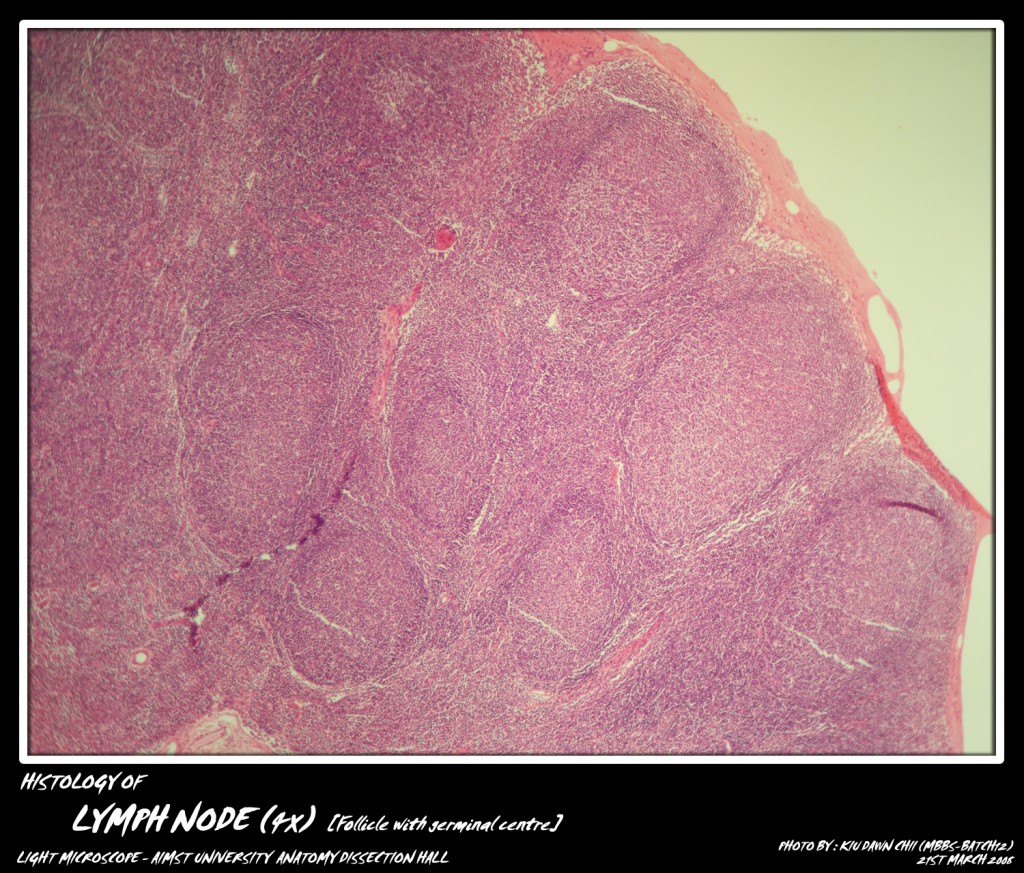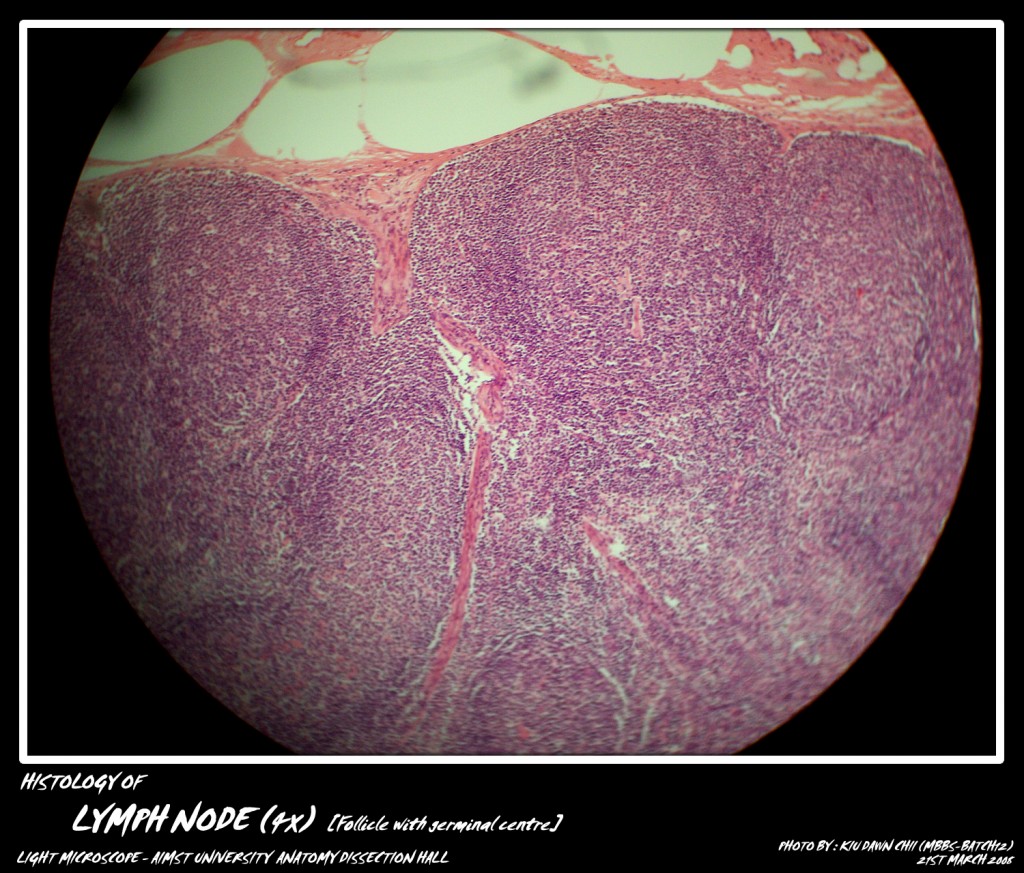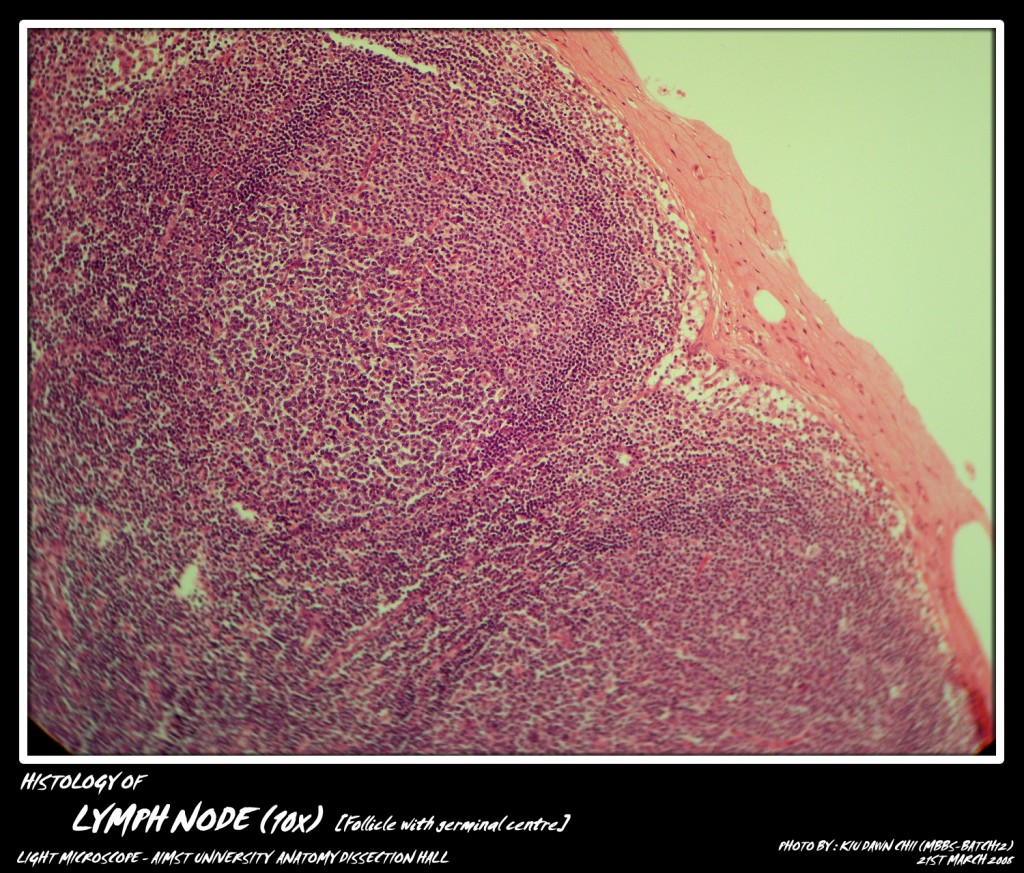LYMPH NODE
It is a rounded or kidney shaped structure. There is slight indentation, the hilum on one side of the node, where blood vessels enter and leave. Lymphatic vessels enter the node at many places over the convex surface but leave it only at the hilum. Thus it contains both afferent and efferent lymph vessels.
The lymph node is covered by a capsule which consists of dense collagen fibers, fibroblasts and few elastic fibers. Trabeculae of dense collagenous connective tissue arise from the capsule and penetrate the node. In the outer peripheral part of node the trabeculae divide the interior of the lymph node into roughly rounded areas.
Lymph flow
Beneath the capsule, the collagen fibers are loosely arranged to form the subcapsular sinus. From this sinus a number of radially directed cortical sinuses pass towards the medulla where these unite to form large medullary sinuses, which in turn join to form one efferent lymph vessel. Number of afferent lymphatics open into the peripheral subcapsular sinus. The lymph filters through the cortical and medullary sinuses and leaves the lymph node through the single efferent lymphatic channel.
Structure of lymph node
The cut surface of a lymph node is seen to be divided into an outer peripheral cortex and an inner medulla. The cellular components of these two zones are supported by a reticular framework which can be demonstrated by silver stain. The phagocytic reticular cells of mesodermal origin are present along the reticular fibers.
Cortex contains lymphatic nodules/primary nodules which are about 1 mm in diameter. These consist of peripheral darker area made up of mature lymphocytes and a lighter central zone called the germinal centre/secondary centre which contains lymphoblasts and plasma cells.
Medulla consists of lymphocytes arranged in cords called the medullary cords. Each cord consists of two or three rows of cells. The medullary sinuses, arterioles, venules occupy the area in between the medullary cords. The thymus derived’ T lymphocytes’ are confined in the deep cortical (paracortical) region. Rest of the lymphocytes belongs to the bone marrow derived” B lymphocytes”.
Functions of lymph node:
1. Filteration of lymph and phagocytosis of antigens and particulate matter.
2. Production of lymphocytes and plasma cells.
3. The plasma cells produce antibodies against invading antigens which attempts to provide adequate immunity to the body.
Adapted from: http://myaimst.net/mbbsb12/photo/histo/yr1histo/lymphoidorgan.html
Micro-photograph taken at AIMST University Anatomy Dissection Hall during Histology class, using Canon A40 camera over light microscope.




